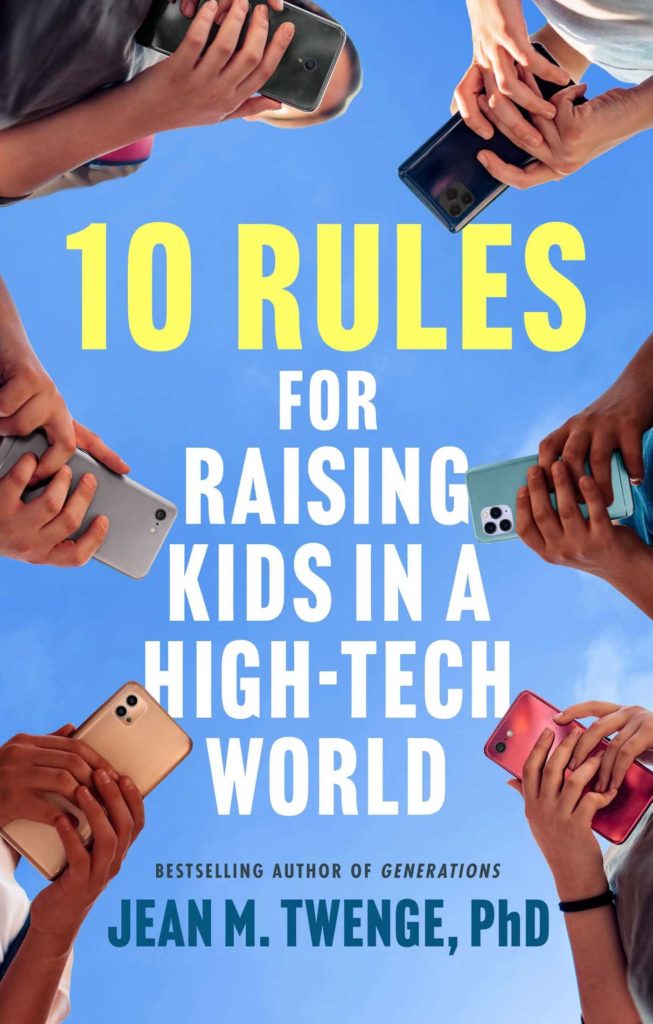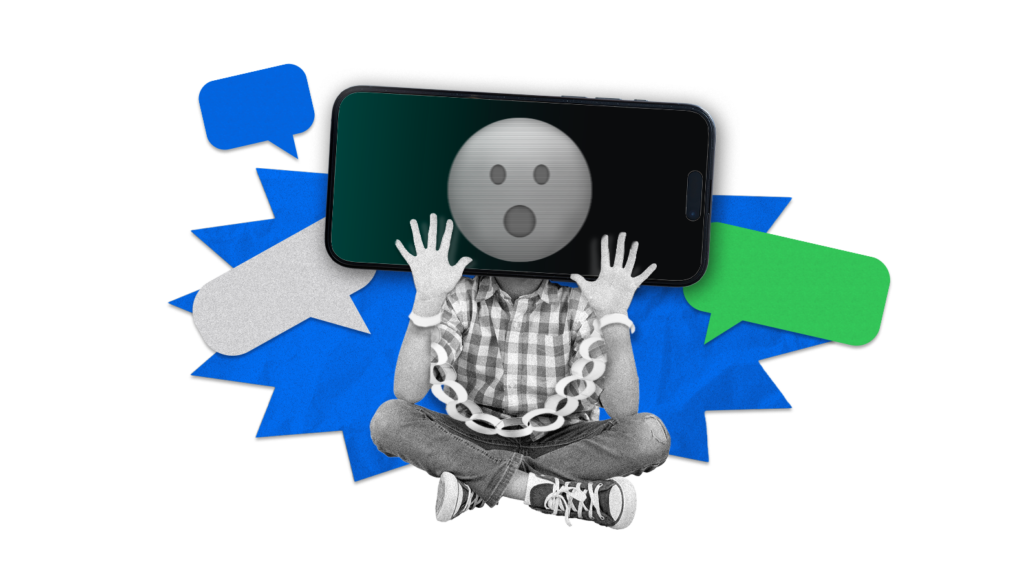Although I have only been a mother for six years, I can’t count the number of times I thought to myself, “I wish there was a manual for this.” The brutal reality is that raising children is more art than science, and many of us feel our way through each situation for each individual child.
And yet, my prayers for a manual have been answered, at least when it comes to helping my children navigate the complex world of digital technology and internet use.
Jean Twenge, a psychologist at San Diego State University, is known for research that has led to the widespread acceptance that the tween and teen mental health decline was linked to smartphone use. She’s given a TED Talk, has testified on Capitol Hill, been profiled by The New York Times and praised by Catholicism’s social media superstar, Bishop Robert Barron.
Now, she has a handbook to help parents “get our kids back.”
“Ten Rules for Raising Kids in a High-Tech World” (Simon & Schuster, $12.99) is a must-read for anyone concerned with how screen time is robbing their children of important developmental milestones and the freedom that childhood provides.

Drawn from her research and personal experience, Twenge has given her contemporaries a path to correct course if they gave their kids too much tech too soon. At the same time, she has handed those of us who have yet to face these challenges a roadmap for setting boundaries, having hard conversations, and challenging the status quo.
While Twenge says that it would be nice to have laws and social norms that reflect a communal investment in children’s safety, such as age restrictions for driving or alcohol use, she knows that “parents are the first and sometimes the only line of defense against devices taking over their children’s lives.”
Absent any oversight, tech companies not only do not enforce their own age restrictions but have documented how their algorithms feed inappropriate and dangerous content to young people and put them in contact with nefarious adults. Such problematic content ranges from pornography to pro-suicide posts to “how-to’s” on maintaining an eating disorder.
Twenge’s first rule is vital: “You’re in Charge.” Parental decisions about technology have a lot to do with parenting styles, she believes. Research shows that the optimal parenting style for flourishing children, including with devices, is characterized as “authoritative,” marked by high affection and clear boundaries.
It is important for children to know they are loved and their feelings are validated, all while being given guardrails. If children experience this dynamic, they are more likely to be receptive to their parents’ reasons for delaying smartphone use and setting up safeguards on other devices.

“Having concrete rules that are reasonably strict is usually the way to go,” Twenge recently told The New York Times. “When stuff has gone wrong, it’s often because I’m like, ‘OK, just this one time.’ And then it blows up in my face.”
She encourages parents to talk to their kids about the fact that every social media post or text message is either already public or can be with the snap of a screenshot. Parents should underscore how time is a precious resource and model that philosophy by putting their own phones away.
Twenge’s other rules are imminently practical and informed by both her research and experience as a mother. They include: “No Electronic Devices in the Bedroom Overnight,” “No Social Media Until 16 — Or Later,” and “Advocate for No Phones During the School Day.”
Some takeaways are worth highlighting.
It is clear that electronic devices negatively affect sleep. Blue light, notifications, and endless scroll options keep users up late or wake them overnight. Diminished sleep correlates with poor mental health.
She flags the very real pressure teens, particularly girls, face to “fall into the role of 24/7 unpaid therapist for their friends,” and encourages adult intervention. Twenge provides several options for communal storage and device charging, and recommends an old-fashioned alarm clock for everyone in the family.
She also presents the data to date on social media’s singularly negative effect on tweens and young teenagers, ranging from negative body image to sextortion to waning attention spans. While she and her husband allow their children to get a few approved social media accounts at age 16 (based on a UK study tracking hours spent on social media and teen satisfaction), parents could easily justify waiting until 18 based on that same study.
The feedback from teens themselves is shocking. Six out of 10 Gen Zers “said they would prefer to live in a world without Instagram.” Young users reviewing TikTok warned their peers, “Do not download this app unless you’re able to spend at least two hours a day on it.” The pressure imposed by social media “streaks,” or sustained back-and-forth sharing with peers, interferes with relationships and responsibilities.
While Twenge largely focuses on what parents can control within their own homes, she also empowers them to advocate for their children while they are at school. The research documenting the effects of bell-to-bell bans on phones in schools is all positive: kids are more focused in class, academic performance goes up, students socialize more during lunch, cyberbullying goes down, and disciplinary action plummets.
Notably, schools with cellphone bans retain their teachers. “If you Google ‘teacher quit because of phones,’ you’ll find story after story of teachers who could no longer deal with the constant battles over phones in the classroom.” Seventy-two percent of high school teachers report it’s a problem.
Twenge generously includes a sample letter to send to school administrators including the latest data supporting the effectiveness of bans.

While the author mainly focuses on limit-setting, her eighth rule, “Give Your Kids Real-World Freedom,” is a positive counterbalance that encourages children’s real-world development.
Twenge’s 2017 book “iGen” (Atria Books, $20) examined how digital devices were interfering with children’s maturation and creating parents who tracked or accompanied their child’s every move.
She encourages parents to let their kids develop independence through everyday solo activities, like walking to school, running errands, and taking responsibilities for jobs around the house.
“Kids need a wide swath of time when they are calling the shots, not adults. That’s how they develop social skills, creativity, and problem-solving ability.” She recounts one of the most helpful pieces of advice she received as a mother of young children: “Remember, you’re not raising children. You’re raising adults.”
I’m grateful that my husband and I have this resource on our shelves. Even if technology changes by the time our kids are teens — perhaps more addictive social media apps will be developed and AI chatbots will become a substantial problem — it is filled with helpful language for starting conversations about tough topics, and provides the facts and figures to back up what might be unpopular decisions.
In the end, it’s a book about how to help kids enter adulthood with the right tools — self-confidence, independence, and a strong moral sense — which they will only stand a chance at gaining if they delay their use of digital ones.

